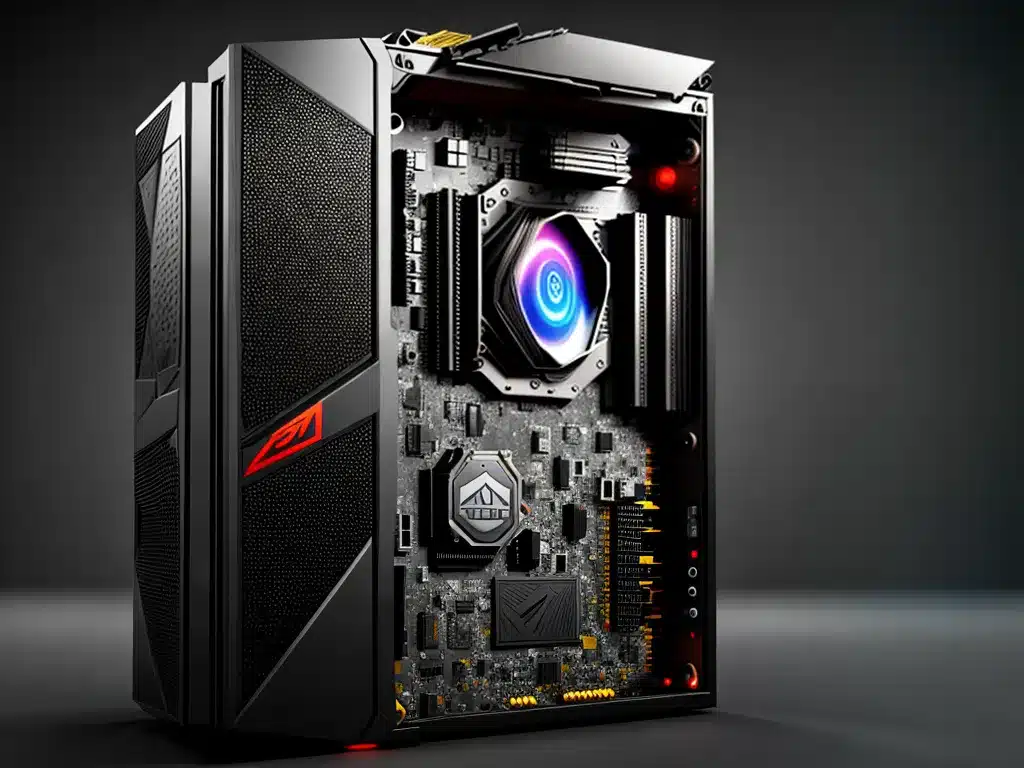
AMD has announced their next generation of Ryzen desktop processors codenamed “Zen 4D” which will bring major improvements in performance and efficiency. The flagship parts will integrate the new 3D V-Cache technology for the first time, providing an extra layer of L3 cache stacked vertically over the compute dies using chiplet architecture. This technology promises to boost gaming performance tremendously.
Zen 4 Architecture
The Zen 4 architecture is expected to be manufactured on an enhanced 5nm process node. It will likely use the latest DDR5 memory and PCIe Gen 5 interface.
Some of the key improvements over Zen 3 include:
- Increased IPC (instructions per cycle) performance through microarchitecture enhancements. Early rumors point to a >10% IPC uplift over Zen 3.
- Support for advanced DDR5 memory providing higher memory bandwidth.
- PCIe Gen 5.0 interface doubling the bandwidth over PCIe 4.0.
- Enhanced multithreading and latency optimizations.
- Improved branch prediction and prefetching algorithms.
- Higher clock speeds approaching 6 GHz boost frequencies.
These advancements will deliver strong gains in both single and multi-threaded workloads. Zen 4 is expected to compete closely with Intel’s Raptor Lake CPUs in terms of gaming and application performance.
3D V-Cache Technology
AMD first unveiled 3D V-Cache last year on their Ryzen 7 5800X3D processor. It uses an advanced packaging technology to vertically stack additional SRAM cache on top of the CPU die.
On the 5800X3D, this provided 64MB of extra L3 cache (compared to 32MB on a normal 5800X) which delivered up to 15% higher gaming performance on average.
For Zen 4, AMD will be incorporating 3D V-Cache on their top-end parts likely in the 16-core and 12-core Ryzen 9 lineup. Early reports suggest the cache size could be 128MB or 256MB.
Benefits of 3D V-Cache:
- Drastically increases the L3 cache available per core. This reduces latency and improves hit rates.
- Better feeds the execution cores with data by reducing trips to slower main memory.
- Significantly boosts gaming performance in memory sensitive titles.
- Provides advantages in applications that benefit from large cache capacity.
With double or quadruple the cache available compared to the 5800X3D, Zen 4D CPUs are expected to provide a major uplift in gaming fps, potentially 15-25% higher than regular Zen 4 chips.
Expectations on Performance
Here are some projections for the performance of Zen 4D with 3D V-Cache based on early leaks:
- Up to 30% higher single-threaded performance versus Zen 3 thanks to IPC gains and faster clocks.
- 50%+ multicore gains in productivity apps through increased core counts and multithreading enhancements.
- 15-25% better gaming fps over non V-Cache Zen 4 parts.
- Overall 10-15% faster gaming performance than Raptor Lake CPUs.
- Potentially 30%+ better professional app performance than Alder Lake with the massive cache size.
This could make Zen 4D the new champion in terms of both gaming and production workloads. However, power efficiency may still favor Intel. Pricing will also play an important role in competitiveness.
AMD is expected to launch Zen 4 and Zen 4D CPUs for the desktop platform in the second half of 2022. It’s shaping up to be an exciting battle in the CPU space! The 3D V-Cache technology gives AMD an edge that Intel may struggle to counter before their own stacked cache debuts. Overall, Zen 4D will provide a massive generational leap in performance to dominate the high-end desktop segment.












